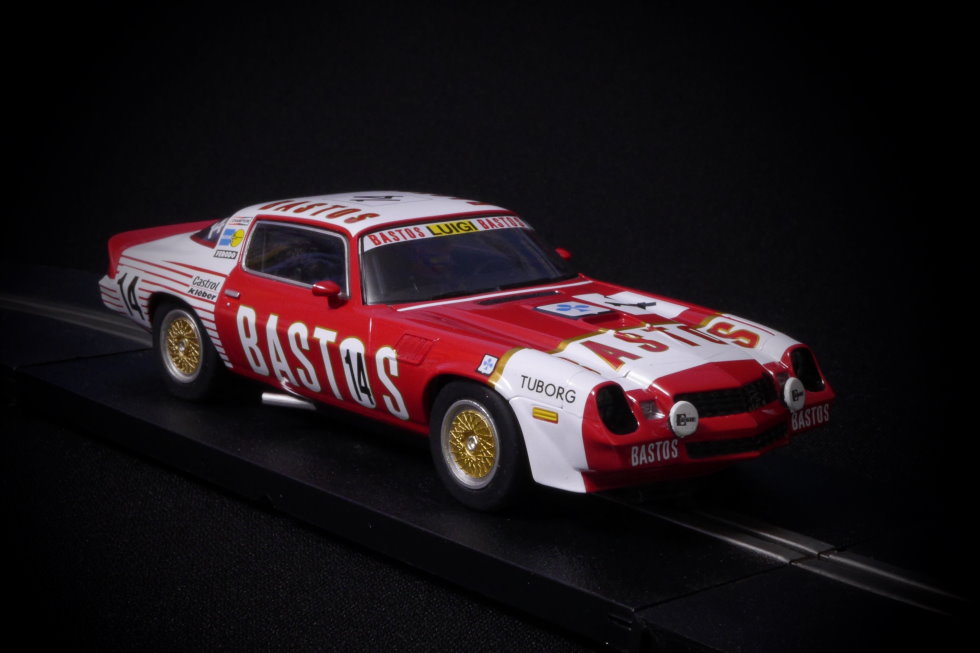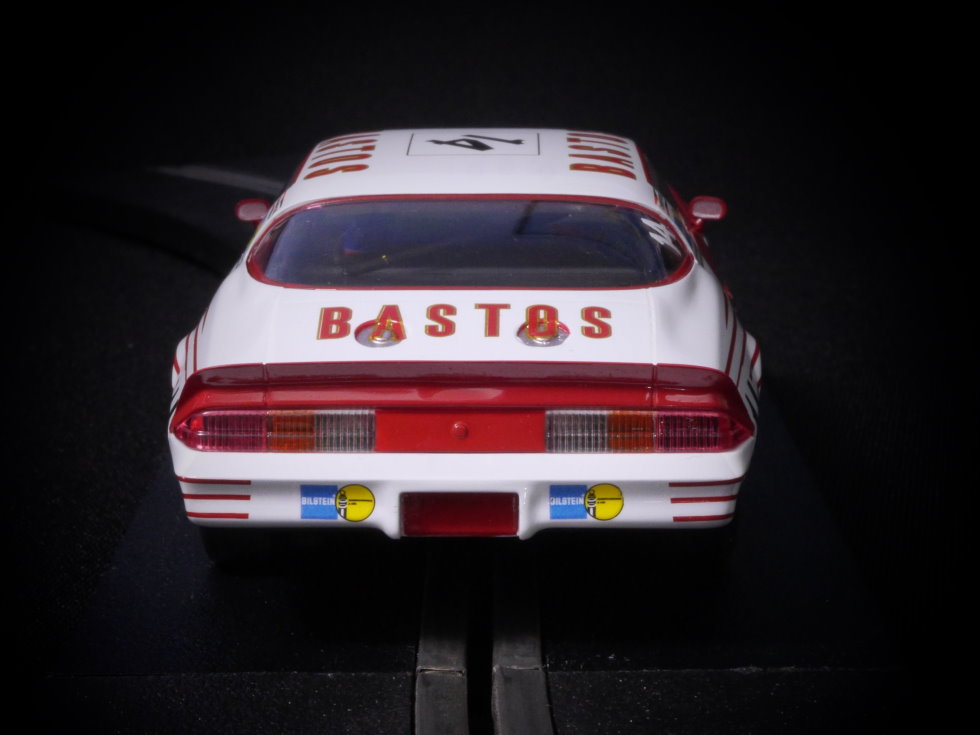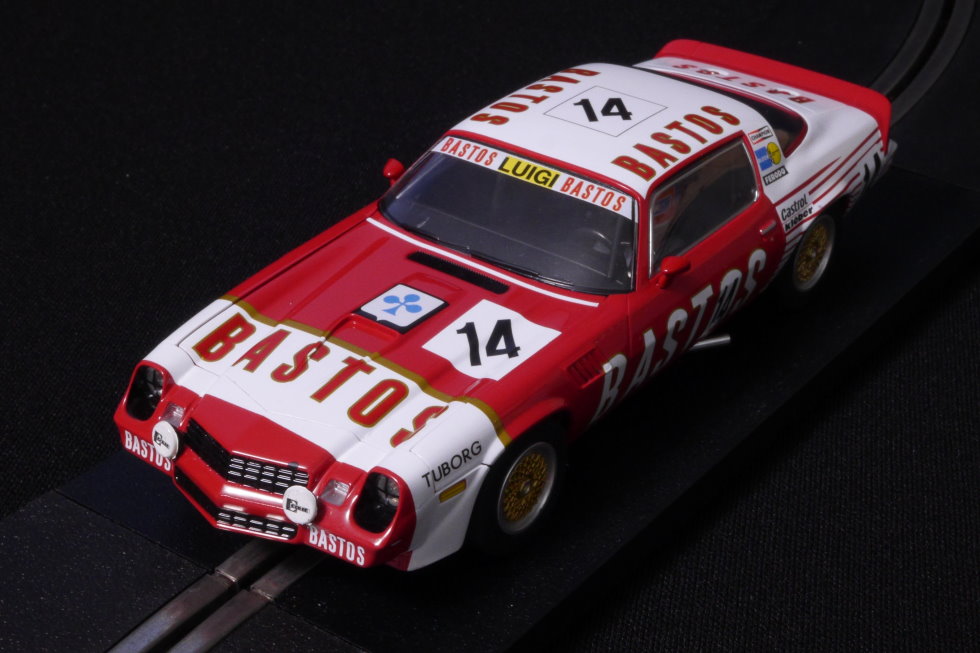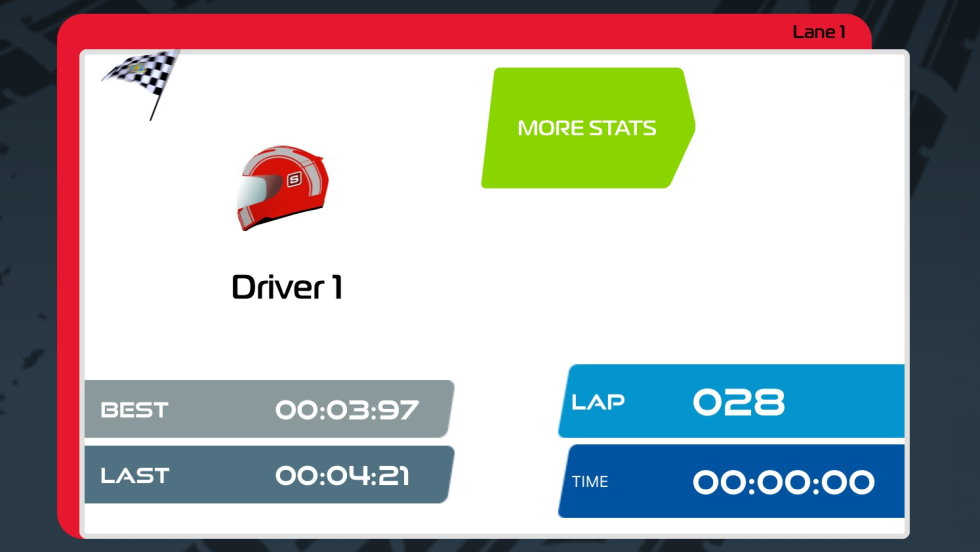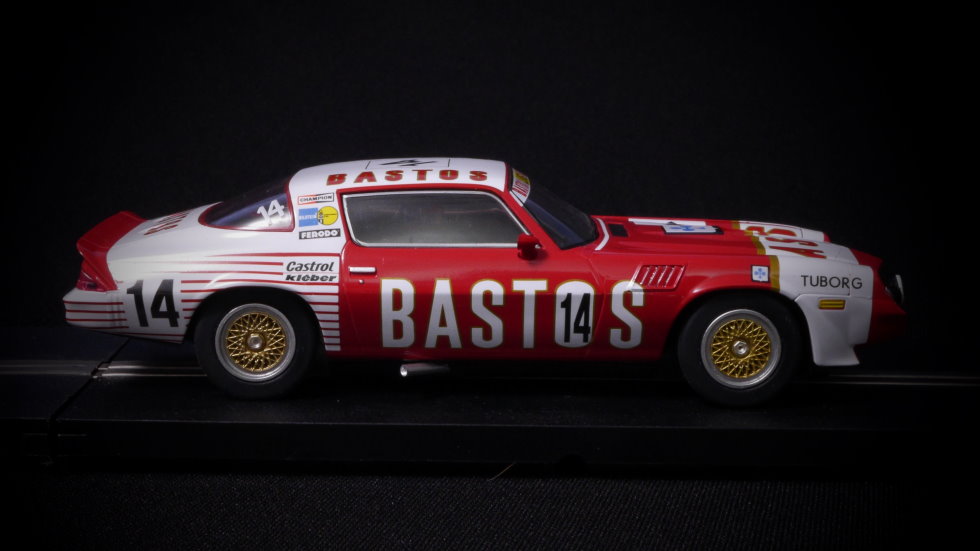If you’re a classic Camaro fan, Scalextric have got you covered…
This brand new 1979 Z28 model is the third in the Scalextric catalogue, following the 1969 and 1971 versions – plus there’s the later IROC-Z too. The final evolution of the second generation Camaro was an icon of American V8 Muscle Cars and an awesome-sounding car on the race track – both in North America and in Europe.
The Scalextric model is part of their classic Trans-Am range and is fitted with a sidewinder motor and a full interior to match the earlier Camaros, Boss Mustangs, Dodge Challengers and the new Barracuda – but it also looks the part alongside European saloon cars like the Capri and XJS.
The Bastos Camaro is expected to arrive late summer / early autumn and can be pre-ordered here: www.jadlamracingmodels.com/scalextric-slot-car-c4235-chevrolet-camaro-z28-1980-spa-24hrs/. There’s also a very cool Z28 road car livery due around the same time: www.jadlamracingmodels.com/scalextric-slot-car-c4227-chevrolet-camaro-z28-silver/
The Real Chevrolet Camaro Z28
The second-generation Camaro was a thoroughly modern-looking car in 1979. The chrome of 1970 had become plastic integral front and rear bumpers, the headlights had changed from round to square – and the Z28 had developed lumps, bumps and spoilers to give it a very eighties look for the start of the new decade. These changes were very popular – 1979 was the best year ever for Camaro sales, with 282,571 cars being sold in the US market. The 4.1 litre straight-six engine was standard, but 5.0 litre and 5.7 litre V8s were the preferred options.
Camaros were raced mostly as lightly-modified road cars – and were a common sight at European saloon car events. Competing in the ‘above 2.5 litre’ division of the Group 1B class, the 5.7 litre V8 powered Camaros looked and sounded very different from the European Fords, BMWs, Opels, VWs and Mazdas they were up against. Not that they were wonderfully successful, but they did thrill the crowds.
The Bastos-sponsored Luigi Racing Z28 was shared by Alain Cudini and Jean Xhenceval at the 1980 Spa 24 hours. The car started from fourth on the grid, but could only finish seventeenth – 44 laps behind the winning Capri 3.0S. A Z28 painted in this livery has reappeared in historic racing in recent years – most notably in the Gerry Marshall Trophy at the Goodwood Members’ Meeting. The car is owned by former McLaren sales and marketing director David Clark and the Scalextric team were able to view the car during the design phase for the model.
The Scalextric Model
I fell in love with this Scalextric model as soon as I unwrapped it. A good job, because I was really excited by the artwork in the catalogue. I had high expectations and it looks like Scalextric have delivered on their promise. I’ve checked the dimensions and it’s all to scale for a standard edition Z28 road car – and hence the Group 1B race car. Of course, plenty of Camaros were fitted with wider body kits, but that’s not what Scalextric are modelling.
This is a big slot car – as it should be. At 154mm long, it fills much of the Scalextric display box. Apart from the Dodge Charger, the Z28 is the longest of the Scalextric Trans-Am and ‘American Muscle’ cars. It is a later model than all of those – and does have a more modern look, especially at the front. The ‘face’ of the 1979 Z28 is distinctive and I can hear the rumble of that Chevy V8 when I look at it. The car also has auxiliary driving lights, as fitted for the 24 hour race.
The construction of the body is interesting as there are three separate pieces – the nose, the bonnet and then the rest of the car. Z28s did have various bonnet styles with intakes, bumps and hood scoops, but the nose was mostly the same. I assume the easiest way to be able to assemble a car with different styles of bonnets is to have a separate nose. It does leave a tiny gap between the panels, which is only really noticeable with the headlights ablaze.
The decoration on this Bastos-sponsored car is sensational. It is a well-known livery and Scalextric have reproduced it near perfectly. The windscreen wipers are a painted part of the windscreen moulding, but they look absolutely fine and it does mean they will never break off. The driver figure and helmet are nicely detailed, with the driver sitting in a spacious, full-depth interior. Unusually, the driver figure is sitting a little too low in the car and could do with the seat raised a couple of millimetres.
I do like the gold BBS wheels. They certainly weren’t standard on a Z28, but were the exact wheels fitted to this car for the 1980 Spa 24 hours. The Camaro’s wheels are highly detailed, unlike the similar hubs on the Jägermeister Porsche 911 Carrera 3.0 RSR that I previewed last month. All-in-all, it’s a pretty awesome model that also happens to be a slot car…
The Mechanical Stuff
Underneath, the underpan has a nifty ‘Z28’ cut-out over the motor. The big gear inside the left rear wheel indicates this car has a sidewinder layout. The underpan is Digital Plug Ready (DPR), meaning it can be easily converted to Scalextric digital using the C8515 Digital Plug or to Carrera Digital132 using the Carson digital conversion chip. There’s also the usual easy-change guide, plus a magnet right under the rear axle. This registered 43.5g of downforce on my DIY magnet gauge.
Removing the three body screws (two front, one at the back) shows a simple layout inside the car. Unusually for a new Scalextric release, the motor sits across the rear of the car in a ‘sidewinder’ set-up. The Scalextric team have chosen this to match the previous Trans-Am cars – with the exception of the in-line AMC Javelin. This should give all the cars similar characteristics on track. Having the motor sitting sideways does, in theory, add a small amount of magnetic downforce – more noticeable with the traction magnet removed. These Scalextric Trans-Am cars are popular at many slot car clubs.
The slick rear tyres are 8mm wide – very slightly on the skinny side – and the rear track is a couple of millimetres less than the Z28’s earlier Trans-Am rivals. That might make the rear of the car slightly less stable… However, at the front, the tyres just touch the track surface – perfect for handling and definitely an improvement over the other models. The wheels look to be the correct size for fitting Slot.it or NSR racing tyres.
The full interior does add quite a lot of weight to the car and to the body. However, there are no extra fixing screws to attach the interior to the underpan, as there was on some older Trans-Am models. Usually, these were simply discarded. With light sanding of the underpan edges, removal of some tabs and re-routing of wires, I expect there to be some excellent body float available. It’s good to see the body posts on the underpan do not have flanges, so the body can move nicely.
Track Performance
I was really surprised by how well this big car performed on the Jadlam SL6 test track. I expected something around the Capri Mk3 or Jaguar XJS level, but was blown away by the balance and speed of the Camaro. It felt really stuck down, but the magnet didn’t measure as being super-strong. And when I pushed the car, the rear did slide rather than break away. The tyres might be narrow, but they also have a decent level of grip.
The Camaro cruised round the twisty layout without a hint of tipping or rolling, just very nicely planted – and deceptively quick. Over a two-minute run with the ARC app, the Camaro managed a massive 28 laps and a record-breaking 3.97 second fast lap. That puts it – without any tweaks – as the fastest Scalextric car on the SL6 test track. I really didn’t see that coming!
To be honest, I’d put this new Camaro down as a looker rather that a racer. After driving the car, I’ve completely changed that assumption. I didn’t have the chance to test the car with the magnet removed, but I see no reason why it shouldn’t be a stunning non-mag racing car. With plenty of European saloon car liveries that can be produced, the Z28 is certainly going to be a contender in the late-70s and early-80s saloon car range that Scalextric are putting together.
Scalextric Chevrolet Camaro Z28 “1980 Spa 24 hours” Data Sheet
Catalogue code: C4235
Available here: www.jadlamracingmodels.com/scalextric-slot-car-c4235-chevrolet-camaro-z28-1980-spa-24hrs/
Range: Scalextric Classic Touring Cars – 1/32 scale / high detail / Digital Plug Ready (DPR)
Scheduled: Summer/ Autumn 2021
Spares included: 2 x braid plates with braid fitted
Lights: front and rear
Motor: Scalextric ‘short-can’ – sidewinder orientation.
Gear ratio: 11:36
Length: 154mm
Wheelbase: 85mm
Rear axle width: 54.5mm
Height: 39mm
Weight: 85g (body = 33.5g not including front valance)
Andy’s downforce gauge: 43.5g magnetic downforce


